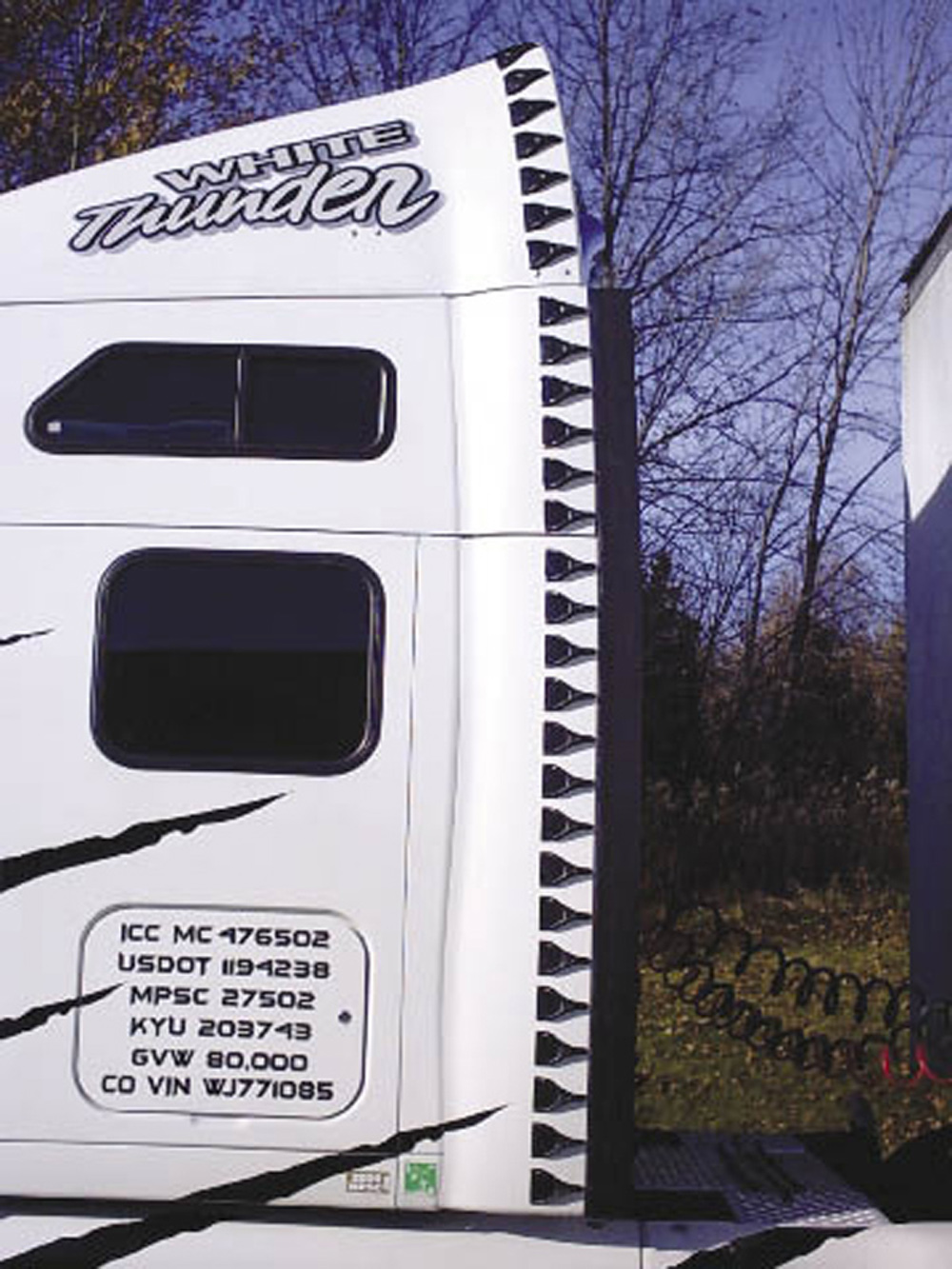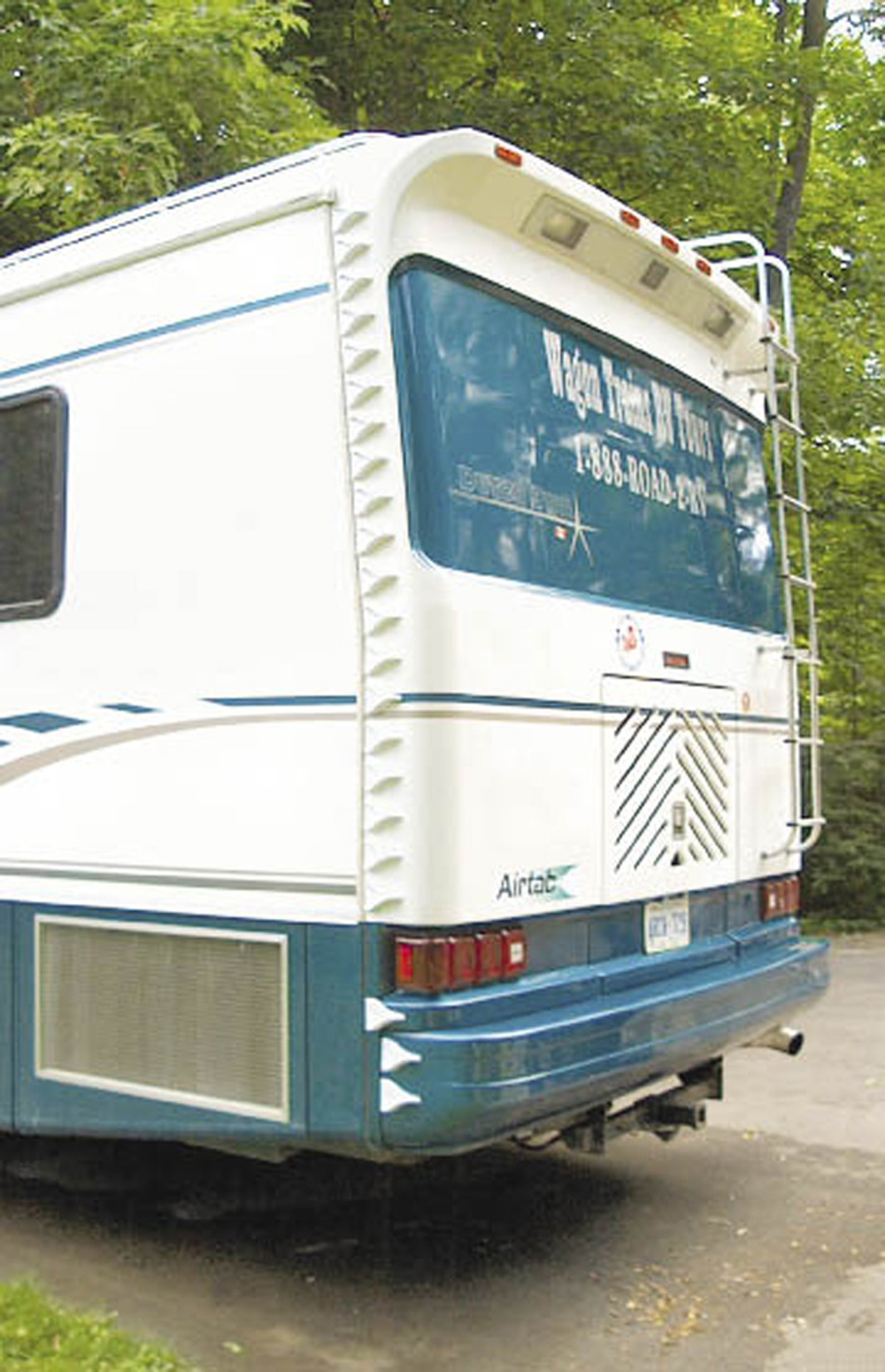 10-07-2018, 09:18 AM
10-07-2018, 09:18 AM
|
#88 (permalink)
|
|
Master EcoModder
Join Date: Jul 2011
Location: Ann Arbor, Michigan
Posts: 4,219
Thanks: 146
Thanked 2,830 Times in 1,986 Posts
|
Truck Vortex Generators Pictures to Pin on Pinterest - PinsDaddy
 Aerodynamics Research Revolutionizes Truck Design
https://spinoff.nasa.gov/Spinoff2008/t_3.html
Aerodynamics Research Revolutionizes Truck Design
https://spinoff.nasa.gov/Spinoff2008/t_3.html

Quote:
Bicyclists, motorcyclists, and even pedestrians feel a push and pull of air as large trucks pass. The larger a vehicle is and the faster it moves, the more air it pushes ahead. For a large truck, this can mean a particularly large surface moving a large quantity of air at a high velocity—its blunt face acting like a fast-moving bulldozer, creating a zone of high pressure. The displaced air must go somewhere, spilling around the cab into swirling vortices. The air traveling along the side moves unevenly, adhering and breaking away, and sometimes dissipating into the surrounding air. At the end of the cab or trailer, the opposite effect of the high-pressure zone at the front develops; the airflow is confronted with an abrupt turn that it cannot negotiate, and a low-pressure zone develops.
The high pressure up front, the turbid air alongside and under the vehicle, and the low pressure at the back all combine to generate considerable aerodynamic drag. A study published in Automotive Engineering in August 1975 found that a tractor trailer unit moving at 55 miles per hour displaced as much as 18 tons of air for every mile traveled. In such cases, roughly half of the truck’s horsepower is needed just to overcome aerodynamic drag.
|
Airtabs came out of NASA research?
Quote:
|
One study conducted in 1989, “Turbulent Flow Separation Control,” explored controlling airflow—flow separation—to decrease energy expenditure and weight in airfoils, inlets, and diffusers and improve aircraft control and decrease drag. The study employed vortex generators, aerodynamic surfaces protruding from a body that draw faster moving air to the surface of the vehicle and disrupt the slower moving boundary layer air around a vehicle, the use of which can be traced back to research conducted by the National Advisory Committee for Aeronautics (NASA’s forebear) in the 1950s. The generated vortices “energize” the slower-moving boundary layer and thereby reduce drag and, in aircraft applications, increase lift.
|
__________________
George
Architect, Artist and Designer of Objects
2012 Infiniti G37X Coupe
1977 Porsche 911s Targa
1998 Chevy S-10 Pick-Up truck
1989 Scat II HP Hovercraft
You cannot sell aerodynamics in a can............
|
|
|

|